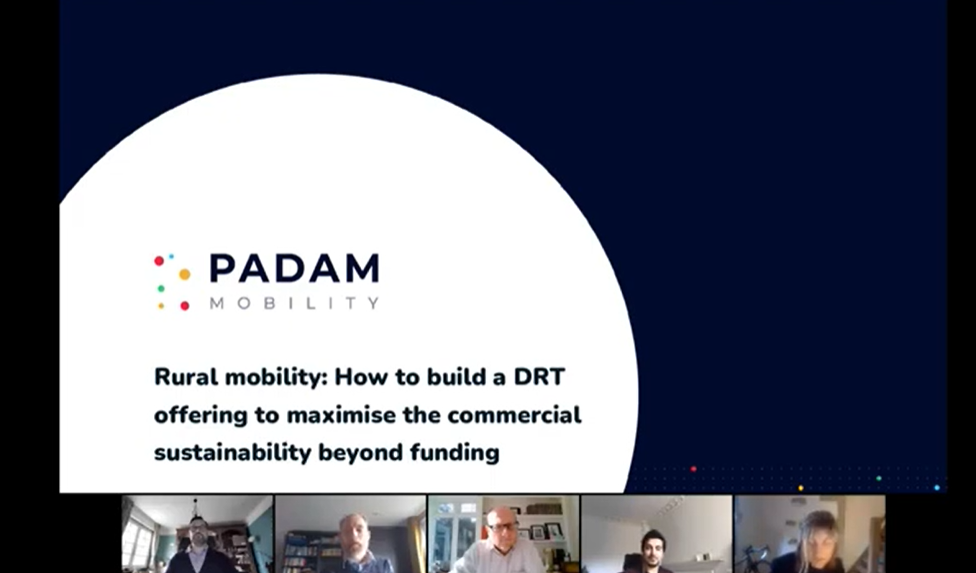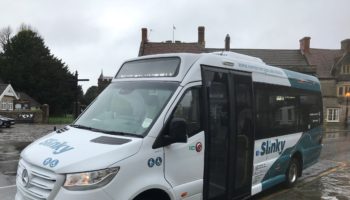Mobility in rural areas: How to set up a DRT offer to ensure economic sustainability beyond the funding – this was the topic discussed by mobility experts in a recent webinar organised by Padam Mobility and presented by Beate Kubitz. Read the most important take-aways here!
While public transport in urban areas is largely well developed, rural regions are usually poorly or not at all connected to a public network.
Demand-Responsive Transport, i.e. transport that adapts to the needs of the individual inhabitants, can remedy this situation. Vehicles only cover the itineraries users request, thus avoiding unnecessary kilometres and CO2 emissions. A good idea in theory, however, not yet implemented in reality.
What are the reasons why DRT services remain rather underdeveloped?
The feasibility and concrete deployment of Demand-Responsive Transport services were discussed by the 5 mobility experts Beate Kubitz, Matthew Clark (Steer), Matt Dacey (VIX Technology), David Shakory (formerly MOIA, now what3works), and David Carnero (Padam Mobility) in a dedicated webinar entitled “Rural mobility: how to build a DRT service to ensure economic sustainability beyond subsidies” that has been organised by Padam Mobility and can be watched here in full-lengths.
The experts agree, DRT is an important achievement and has great potential to significantly improve the mobility of rural populations and thus their overall quality of life.
However, in order to make DRT available to all, it is necessary to overcome prejudices and eliminate identified problems. An important aspect in this context is the flexibility of the operator and the software provider. Each territory is different and therefore needs to be analysed individually in order to identify how the DRT service needs to be designed to provide added value for users.
“First you have to understand exactly what the real needs of the population are and how these needs can be met“, says Matthew Clark. He adds “It is important to realise that ‘rural’ is not one place“. This aspect recurs throughout the discussion: understanding the needs and adapting a flexible DRT offer accordingly.
How is it possible to make Demand-Responsive Transport economically viable?
So far, the general view is that public pooling services are not profitable. However, this should not be the main incentive to provide rural DRT to the population. David Carnero says any newly implemented service has to reach a certain point “where it is efficient from an operational point of view“. He adds, “It’s a platform play, so the platform has to be built, the usage has to be built (…).” To be able to speak of profitability at all, the service must offer users real added value, be well accepted by them and establish itself in the long term. This process does not happen overnight.
It is also crucial that DRT services are used efficiently, not simply as another mobility product in addition to the existing traffic, but to actually relieve traffic, for example, if users decide to use a DRT service to the nearest transport hub instead of relying on their own car.
The high user-friendliness offered by DRT services can be a driver to encourage users in general to use more public mobility services. This could be an important step towards Maas (Mobility as a Service) and revolutionise the way we perceive and use mobility – especially in rural areas.
Watch the full webinar in replay
What do you think about this topic? Don’t hesitate to contact us!
This article might interest you: Mobility-as-a-Service and DRT: Towards A sustainable Platform




